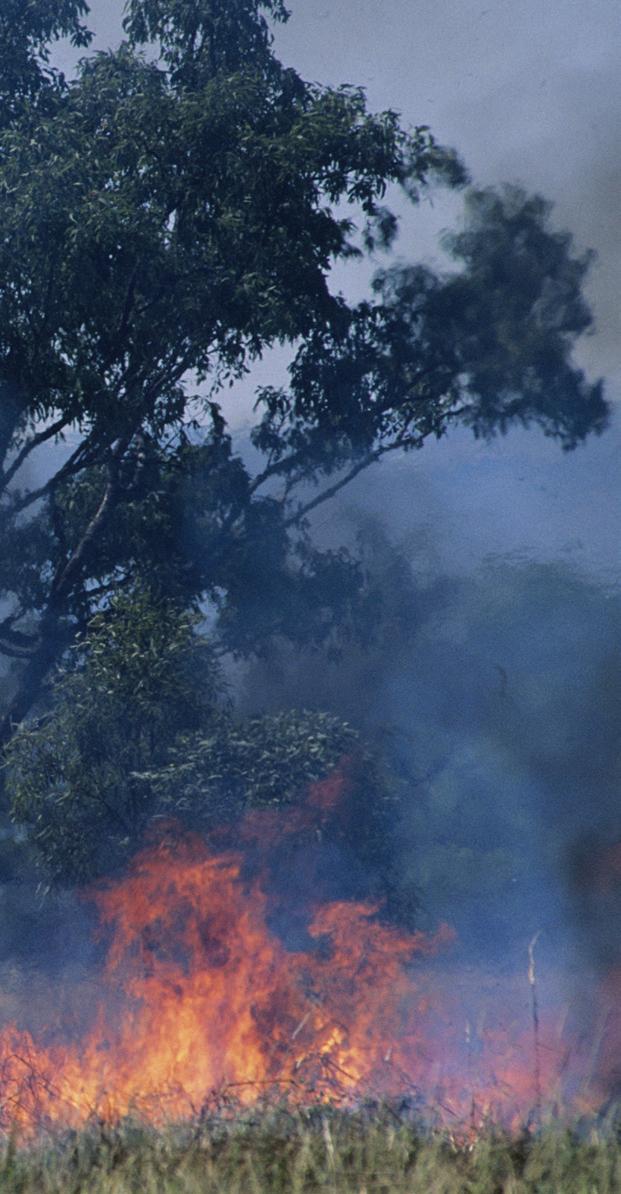
4 minute read
LOOKING GLOBAL
RAMPANT FIRES
– A global threat of global warming
Fires sparked by natural causes such as lightning and combustion of organic matter are an integral part of the cycle of life of forests, woodlands and scrublands. Many species have evolved to co-exist with fires which stimulate new growth, while at the same time remove old vegetation. Natural fires also play an important role in the recycling of nutrients and the maintenance of biodiversity.
The rampant fires that destroyed vast swathes of forests and woodlands on three continents – Australia, South America and North America – in 2019 have drawn renewed attention to the effects of climate change and illegal forest clearing. Record-breaking temperatures exacerbated by a prolonged drought in Australia resulted in the fire season starting earlier
36 than usual in June 2019. Although fire is a natural event, the “Black Summer” of 2019 was made worse as many fires were lit deliberately and spiralled out of control.
The Australian fires devastated over 110,000 km² (the size of Namibia’s Hardap Region) of forest and bush, destroyed over 3,000 houses and buildings and killed 33 people, including three firefighters. In early December, Sydney’s air quality measured 11 times the hazardous level.
You may wonder how that affects us here in Namibia. Satellite photos clearly show how plumes of black carbon drifted more than 7,000 km from Australia towards South America. According to the National Aeronautics and Space Administration (NASA) the fires emitted 306 million tonnes of carbon dioxide into the air.

Millions of animals were incinerated by the fires. The University of Sydney estimates that the actual figure for birds, mammals and reptiles (excluding insects, frogs and bats) could be as high as one billion. In the state of New South Wales, which experienced the most fires, an estimated third of the koalas may have been killed and a third of their habitat has been destroyed.
Earlier in 2019, the world was shocked by the drastic increase in the number of fires in the Amazon forests – which were mainly started deliberately for forest clearing and illegal logging. By August last year, a total of 30,901 fires were raging in the Amazon forests – three times more than in the same month in 2018 – and an estimated 70,000 km² of forest were destroyed. Much to the indignation of environmentalists and several world leaders, Brazilian President Jair Bolsonaro,
a climate change sceptic, played down the extent and the impact of the Amazon forest fires. As international pressure mounted, Bolsonaro attacked French President Emmanuel Macron over his “lamentable colonialist stance” after Macron criticised Bolsonaro’s environmental record.
In California, which also experiences regular fires, an estimated 5,050 km² of natural vegetation was destroyed in 2018 and 2019. Once again, it has been established that some of these fires were started deliberately.
Namibia’s woodlands, which cover less than 20% of the country’s land surface, are restricted to the Ohangwena Region in Owamboland, the two Kavango regions and the Zambezi Region in the far northeast of the country. They range from mixed trees populations and woodlands dominated by characteristic savanna species to shrublands and riverine woodlands.
Earlier in 2019, the world was shocked by the drastic increase in the number of fires in the Amazon forests – which were mainly started deliberately for forest clearing and illegal logging. While the extent of fires started deliberately in Namibia’s woodlands is small in comparison to the Australian, Amazon and California fires, it is nevertheless a cause of concern. More than 50% of the surface of the Zambezi and Kavango East regions is set alight each year, mainly to stimulate early growth in a slash-andburn use of land for crop production. These unseasonal fires, which are usually started in the winter, have a profound effect on the forests. Trees are killed, shrub thickets proliferate, soil fertility is reduced, carbon dioxide is released and wildlife may be killed. Frequent unseasonal fires have also changed the composition and cover of the vegetation in some areas. So what’s the fuss all about then? Forests and woodlands play an essential role in the removal of carbon dioxide from the atmosphere, while rainforests such as the Amazon controls local and regional climate, including rainfall. Most importantly, forests host 80% of the earth’s terrestrial biodiversity. And they are home to countless millions of people who utilise a wide variety of natural resources such as wood for building material and the crafting of domestic implements, as well as indigenous fruit, while various parts of trees have medicinal uses. Some trees and forests are of special cultural importance and are revered.
For city dwellers, forests and woodlands are refuges that offer peace and tranquillity away from the hustle and bustle of urban life. Places where they can simply relax or indulge in bird watching or game viewing.
FEATURING Latest Business News The Economy Government Ministries Private And Public Service Institutions Business & Proffessional Organizations Diplomatic Missions, Parastatals & Local Authorities


NETWORK

ANNUAL REVIEW OF NAMIBIAN TRADE & INDUSTRY
MULTI-PLATFORM MEDIA NETWORK OF BUSINESS PROFESSIONALS & TRADERELATED INFORMATION, PROMOTING AND ENCOURAGING LOCAL AND FOREIGN INVESTMENT
ANNUAL PORTFOLIO • WEBSITE • E-BOOK FORMAT • THE ECONOMIC PULSE • SOCIAL MEDIA










